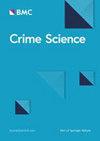Illegal fishing and compliance management in marine protected areas: a situational approach
IF 3.1
Q1 CRIMINOLOGY & PENOLOGY
引用次数: 6
Abstract
Protected Areas (PAs) are spatially representative management tools that impose various levels of protection for conservation purposes. As spatially regulated places, ensuring compliance with the rules represents a key element of effective management and positive conservation outcomes. Wildlife crime, and in particular poaching, is a serious global problem that undermines the success of PAs. This study applies a socio-ecological approach to understanding the opportunity structure of illegal recreational fishing (poaching) in no-take zones in Australia’s Great Barrier Reef Marine Park. We use Boosted Regression Trees to predict the spatio-temporal distribution of poaching risk within no-take Marine National Park zones. The results show that five risk factors account for nearly three quarters (73.6%) of the relative importance for poaching in no-take zones and that temporally varying conditions influence risk across space. We discuss these findings through the theoretical lens of Environmental Criminology and suggest that law enforcement strategies focus on reducing the negative outcomes associated with poaching by limiting the opportunity of would-be offenders to undertake illegal activity.海洋保护区的非法捕鱼与合规管理:一种情境方法
保护区(pa)是具有空间代表性的管理工具,为保护目的而施加不同程度的保护。作为受空间管制的地方,确保遵守规则是有效管理和积极保护成果的关键因素。野生动物犯罪,特别是偷猎,是一个严重的全球性问题,破坏了保护区的成功。本研究应用社会生态学方法来了解澳大利亚大堡礁海洋公园禁渔区非法休闲捕鱼(偷猎)的机会结构。利用增强回归树方法预测了海洋国家公园区内偷猎风险的时空分布。结果表明,5个风险因素占禁猎区偷猎相对重要性的近四分之三(73.6%),并且时间变化的条件会影响整个空间的风险。我们通过环境犯罪学的理论视角讨论了这些发现,并建议执法策略的重点是通过限制潜在罪犯从事非法活动的机会来减少与偷猎相关的负面后果。
本文章由计算机程序翻译,如有差异,请以英文原文为准。
求助全文
约1分钟内获得全文
求助全文
来源期刊

Crime Science
Social Sciences-Cultural Studies
CiteScore
11.90
自引率
8.20%
发文量
12
审稿时长
13 weeks
期刊介绍:
Crime Science is an international, interdisciplinary, peer-reviewed journal with an applied focus. The journal''s main focus is on research articles and systematic reviews that reflect the growing cooperation among a variety of fields, including environmental criminology, economics, engineering, geography, public health, psychology, statistics and urban planning, on improving the detection, prevention and understanding of crime and disorder. Crime Science will publish theoretical articles that are relevant to the field, for example, approaches that integrate theories from different disciplines. The goal of the journal is to broaden the scientific base for the understanding, analysis and control of crime and disorder. It is aimed at researchers, practitioners and policy-makers with an interest in crime reduction. It will also publish short contributions on timely topics including crime patterns, technological advances for detection and prevention, and analytical techniques, and on the crime reduction applications of research from a wide range of fields. Crime Science publishes research articles, systematic reviews, short contributions and theoretical articles. While Crime Science uses the APA reference style, the journal welcomes submissions using alternative reference styles on a case-by-case basis.
 求助内容:
求助内容: 应助结果提醒方式:
应助结果提醒方式:


